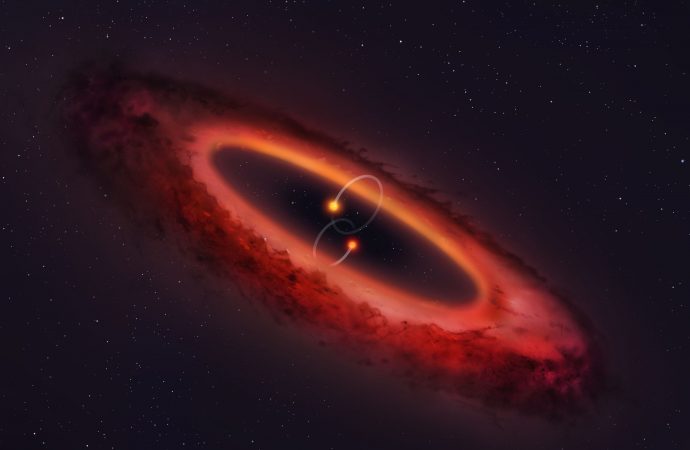The newly discovered system could lead to finding even stranger distant planets.
Our Solar System has got one star and a handful of planets, and that’s really all we need. But other systems can have much more than that, often coming with two or—rarely—three stars orbiting each other. One group of astronomers has gone even further, managing to find a bizarre quadruple star system hiding just 146 light-years away.
The system, named HD 98800, was discovered by astronomers using the Atacama Large Millimeter Array, a giant radio telescope located in Chile. The radio telescope was key to discovering this system because the stars were surrounded by a protoplanetary disk—a ring of dust and gas found in very young systems before planets have been formed. Eventually, this dust and gas will collapse to form planets, but until then this disk blocks most light from escaping the system.
Radio waves, however, can pierce through the dust, and using a radio telescope, scientists were able to spot four separate stars inside that dust. These stars form two binary pairs, one right in the middle of the system and one orbiting billions of miles away. In true astronomer fashion, the outer pair are named Aa and Ab, while the center pair are named Ba and Bb.

A view from an object inside the protoplanetary disk. University of Warwick/Mark Garlick
Finding a quadruple star system is pretty weird by itself, but what truly makes this system weird is the protoplanetary disk. In most systems, that disk is aligned with the host star. Take our own system, where all of the planets and asteroids orbit in roughly the same flat plane as our sun. That’s not the case for HD 98800, where the disk of dust and gas is at a right angle to the stars in the center.
This star system is the first binary system to have this kind of perpendicular disk, and it hints at all kinds of new worlds just waiting to be discovered. To be specific, protoplanetary disks typically form planets eventually, which means there’s a good chance there are planets out there orbiting binary star systems at all kinds of weird angles. We typically don’t search for planets at these weird angles, so there may be an entire category of planets we haven’t even begun to explore yet.
That’s pretty exciting, but it’s a hypothetical at this point. Even though we’ve found one of these such systems with a protoplanetary disk it doesn’t mean we’ll ever find one with planets. It’s entirely possible that planets simply can’t form under these conditions. But if we do manage to find some, they’ll likely be even stranger worlds than the ones we’ve already discovered.
Source: popularmechanics
































Leave a Comment
You must be logged in to post a comment.